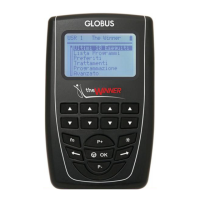THE ELECTROSTIMULATION
The electrostimulation does not want to replace physical activity but it must be considered as an
additional treatment to it.
According to the aims, it will be useful:
- To sportspeople, in order to complete the normal training and to increase performances
- To those who want to treat some imperfections
- To those who suffer from some pathologies
- To those who have suffered from a trauma or in the rehabilitation.
The electrostimulation is a technique that provokes a muscle contraction completely similar to the
voluntary one, by using electrical impulses that act on motor points (motoneurons) or on nerve
endings (TENS impulses).
There are two different ways of use:
- muscle stimulation (ideal for strength development and for aesthetic treatments)
- stimulation to nerve endings (ideal for the treatments against pain)
Types of muscle
The muscle can be divided in three different types: streaked or voluntary muscle; cardiac muscle
and smooth or involuntary muscle.
The voluntary muscle (streaked) includes the skeletal muscles and the musculature of organs such
as the eyeball and the tongue. It permits the movement and the maintenance of the posture and
contributes to shape the body. It responds very quickly to nerve impulses, by contracting in a rapid
and intense way. The voluntary muscle cannot be contracted for long time with high intensity
because it is subject to fatigue. Generally, streaked muscles are connected to the skeleton by means
of tendons.
The involuntary muscle (smooth) covers the internal walls of our organs, it is in the wall of the
blood vessels, in the wall of the hollow organs (stomach, intestine), inside the eyeball, in the erector
muscles of the hairs. Its main function is to push materials inside and outside the body. Smooth
muscles have very slow, but prolonged and more effective contractions (requiring less ATP). They
are not easy to fatigue and are often intrinsic and, therefore, they do not adhere to skeletal
structures.
The cardiac muscle is responsible for the continuous and rhythmic contractility of the heart and it
has some functional and structural features of the other two types of muscle tissues.
The cardiac and the smooth muscle are not voluntarily controlled.
The most part of the human body muscles belongs to the category of streaked or voluntary muscles,
with approximately 200 muscles for each side of the body (approximately 400 totally). Skeletal
muscles are the target of the EMS (Electrical muscle stimulation).
The mechanism of the muscle contraction
The skeletal muscle exercises its functions through the mechanism of the contraction.
When the muscle contraction happens, the movement of the articulations is produced and,
consequently, the movement of the skeleton, too.

